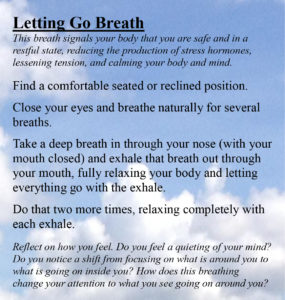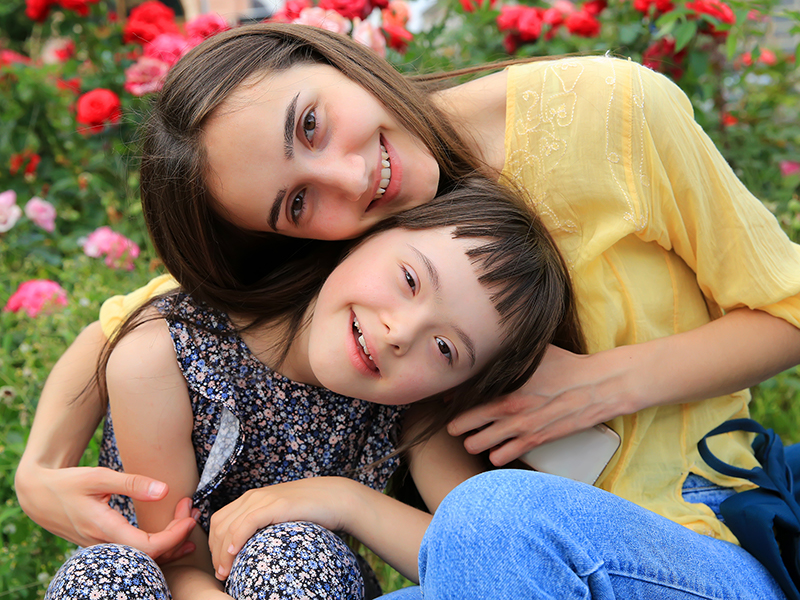For many of us, including children, chronic stress has become a natural state of being. Socioeconomic status, environmental factors, prolonged illness, long-term care for family members with special needs and trauma are just a few of the exacerbating circumstances that entrench chronic stress in present-day experiences. (Schneiderman, et al., 2005)
The stress response can be a wonderfully positive tool for self-regulation and preservation. In the short term, the stress response motivates and inspires adaptability. However, if the threat passes and the behavioral state persists along with the changes in neural circuitry, the sympathetic nervous system (the one that gives you the “fight or flight” response) remains activated and the body is unable to transition from high alert to its natural reparative state of “rest and digest” (initiated by the parasympathetic nervous system).
Not only does chronic activation of the sympathetic nervous system produce long-term physiological and psychological effects, but the state of heightened alert can make it difficult, if not impossible, to read environmental cues, including people’s facial expressions and gestures, in perceiving what is threatening. A sense of safety cannot be established, and self-regulation becomes exponentially more difficult. In addition to resumption of a state of rest and digestion, activation of the social connection system is vital to experiencing a sense of belonging and safety. (Porges, 2011)
Children who are differently abled or have experienced trauma may have more difficulty adapting to stressful circumstances, as their capacity to recognize biomarkers and regulate the stress response may be compromised. (Lambert, 2020) Their bodies and minds are already more likely in an increased state of high alert in processing sensory stimuli and dealing with their daily routines. This ongoing state of high alert may appear in the form of excessive tension and irritability or limp and sluggish withdrawal which become habitual patterns of response. Moving out of this state of high alert and these patterns takes practice.
Have you ever had someone in the heat of the moment shout “relax!” at you? In that situation, how likely were you to be able to access your coping skills and actually calm down? It is very difficult to put aside the fight-flight reaction and entrenched patterns of response to stress unless given the opportunity outside of stressful moments to practice those tools. Scientific research has shown that mindfulness-based practices improve executive functioning and attention while decreasing depression, anxiety/stress and negative behaviors. Studies have also shown that learning is more successful when based in play. (Zost, 2017) Our role as adults in children’s lives is to provide them opportunities to practice the tools for feeling safe and calm during playful situations in which we ourselves are joyful, actively engaged and socially connected.
In my work with differently-abled children and adults, the focus is not on what can’t be done or forcing a particular outcome. Rather, it is on accessing internal resources through playful, positive connections, developing simple and accessible skills for feeling steady and safe – even when the world outside does not feel steady or safe.
The connection begins with the breath. The breath is the fundamental voluntary means for accessing the parasympathetic nervous system and inspires an internal connection even in those with physiological limitations. Enhancing breath awareness and ultimately breath control is a powerful and simple means for instigating physiological, emotional and behavioral change. (Hopper, et al., 2019) The breath can provide a doorway for transitioning from chronic stress into safe mode. In this safe mode, there is increased capacity to feel what is going on in the body, to listen to what is going on in the mind, draw upon intuition, read cues in the environment and feel more in control.
The breathing exercise below allows for playful exploration of movement of the breath in the body, the capacity of breath awareness to interpret perceptions and the control of breath to shift experiences.
Try this breathing exercise yourself. Notice what it does for you.
- Find a comfortable seated or reclined position.
- Close your eye and breathe naturally for several breaths.
- Take a deep breath in through your nose (with your mouth closed) and exhale that breath out through your mouth, fully relaxing your body and letting everything go with the exhale.
- Do that two more times, relaxing completely with each exhale.
Reflect on how you feel. do you feel a quieting of your mind? Do you notice a shift from focusing on what is around you to what is going on inside you? How does this breathing change your attention to what you see going on around you?

There are no right or wrong answers in this experience – it is simply an exercise of awareness. Breath awareness is not an activity designed to produce specific results (it doesn’t matter what it looks like), but an opportunity to engage in a process of discernment for your own well-being (it is all about what it feels like). The more the exercise is practiced, the greater the discernment and the more comfort comes in calling upon the practice at will.
To freely, playfully and joyfully connect with the breath relaxes the body, quiets the mind, enhances positive connections and builds resilience for healthier, happier living … for all of us.


